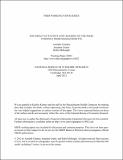The impact of patient cost-sharing on low-income populations: Evidence from Massachusetts
Author(s)
Chandra, Amitabh; Gruber, Jonathan; McKnight, Robin
DownloadGruber_The impact.pdf (149.1Kb)
PUBLISHER_CC
Publisher with Creative Commons License
Creative Commons Attribution
Terms of use
Metadata
Show full item recordAbstract
Greater patient cost-sharing could help reduce the fiscal pressures associated with insurance expansion by reducing the scope for moral hazard. But it is possible that low-income recipients are unable to cut back on utilization wisely and that, as a result, higher cost-sharing will lead to worse health and higher downstream costs through increased use of inpatient and outpatient care. We use exogenous variation in the copayments faced by low-income enrollees in the Massachusetts Commonwealth Care program to study these effects. We estimate separate price elasticities of demand by type of service. Overall, we find price elasticities of about −0.16 for this low-income population — similar to elasticities calculated for higher-income populations in other settings. These elasticities are somewhat smaller for the chronically sick, especially for those with asthma, diabetes, and high cholesterol. These lower elasticities are attributable to lower responsiveness to prices across all categories of service, and to some statistically insignificant increases in inpatient care.
Date issued
2013-11Department
Massachusetts Institute of Technology. Department of EconomicsJournal
Journal of Health Economics
Publisher
Elsevier
Citation
Chandra, Amitabh, Jonathan Gruber, and Robin McKnight. “The Impact of Patient Cost-Sharing on Low-Income Populations: Evidence from Massachusetts.” Journal of Health Economics 33 (2014): 57–66.
Version: Original manuscript
ISSN
0167-6296